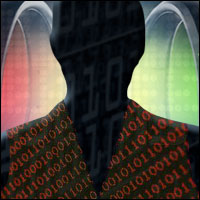
Wearable computing hove into view in a big way this week when Salesforce.com announced Salesforce Wear, which enables developers to build new apps for teeny-tiny screens and devices that you, well, wear. Wearables is a market poised for takeoff. Last year, for instance, Apple cornered the world markets capturing all the copyrights to “iWatch,” which I think was not a coincidence. Also, let’s not forget the things that are not worn but that simply exist through sensors on the Internet of Things.
What does wearables as a class of devices mean? It’s time we began asking hard questions, because if Say’s Law (supply creates demand) ever had any applicability, it will show itself in this still-emerging market, and we really want to get demand right. There either are, or there shortly will be, wearables for your wrist, your neck and pocket. Each does something different, and each will need software — so the question about the killer app, not seen for real since early laptop days, seems to be relevant again.
More importantly, though, you can’t answer that question until you also ask and answer questions about what we’ll be doing with wearables. The long evolution of technology beginning with the mainframe is a story of ever more personal and relevant information. Mainframes automated back-office functions, while PCs, laptops and networks automated rank-and-file workers and ignited a productivity explosion. Handhelds made us social and made computing personal in brand new ways.
Context-Specific Complexity
The wearables category is a different kettle of fish. You’ll notice right off that at least this generation of wearables is not intended to undertake every compute function. Wearables seem to be context-specific, so a device might monitor your vital signs but not your golf swing, or vice versa. Or something like Google Glass will deliver needed content to your cornea, but it won’t help you get into a secure zone.
So very quickly, you can see that wearable computing as a class has a great deal more complexity to it than any of the preceding generations of computing. That makes developing for individual platforms challenging, and building development tools that can address all of the form factors and their uses, even more so.
Heck, just imagining the potential uses for wearables is a challenge, so I was glad to see that Salesforce didn’t just say, “come and get it” with some half-baked developer tool designed to enable you to recreate your GL on your wrist, because that would be a complete nonstarter.
Instead, Salesforce did some smart things. First, it made available some reference applications based on its developer pack. The apps showcase a number of innovative business use cases that won’t exactly be second nature to you unless you are an oil rig worker needing to fix some complex bit of technology (yes, there’s a reference app for that).
Second, it made these reference apps available as code for anyone to see, evaluate and modify in an open source way. This will help speed the adoption of Salesforce Wear and identify missing components and new opportunities.
Finally, Salesforce decided it would not limit its deployment to a small number of devices. Instead, it’s casting a broad net in an attempt to support the fledgling market. Imagine if Microsoft had done the same thing with Office when the iPad debuted.
To Boldly Wear
There are other things in the announcement that I think are not only cool, but also necessary to make the product take off — like security in the form of two-way identity flow to keep you from having to constantly re-log in. What a hassle that would be on a small device. Also, it goes without saying that these things all need to connect with one or more motherships across the wireless Web before the Internet providers try to chop up this last bit of the public commons.
So, that’s that. Now, what does this mean? Are wearables just another kind of hardware that we can use for checking email? I definitely hope not. Wearables represent a new approach to being in the world and, as such, their applications and the business processes that they support have not been fully figured out yet — and we’ll be saying that five years hence, too.
Wearable computing is a new, new thing — a paradigm being born. For that reason, its success will be as dependent on a killer app or three as the laptop’s was on Harvard Graphics and later PowerPoint. Understanding this drives the next question. What kind of world will we inhabit that drives the development of these apps?
Without getting all Kurzweillian on you, I can say that the permutations can be very interesting. Wearables can deliver content, take your vital signs, prove your identity, and follow your motion — just for starters. The implications for me are that wearables will support more independent yet thoroughly connected lifestyles. If handhelds enable us to be connected from anywhere to anywhere at any time, then I think wearables will enable us to optimize that existence with presence.
So, application development for wearables is a big deal if you ever expect to do more with that fancy watch than tell time and check basic Office functions. However, it also marks another turning point in which technology will become a part of your extended life.
Sometime in the not-too-distant future, we will all wonder aloud not only at how we ever got along without wearables, but also at why it took so long for us to fully realize the vision of the 1960s-era Star Trek.





















































